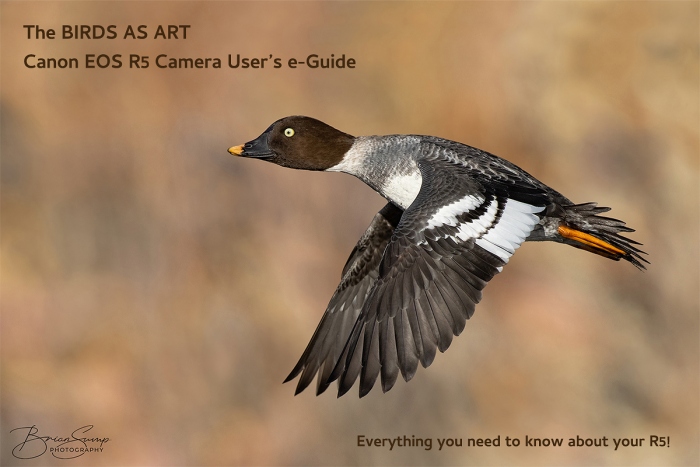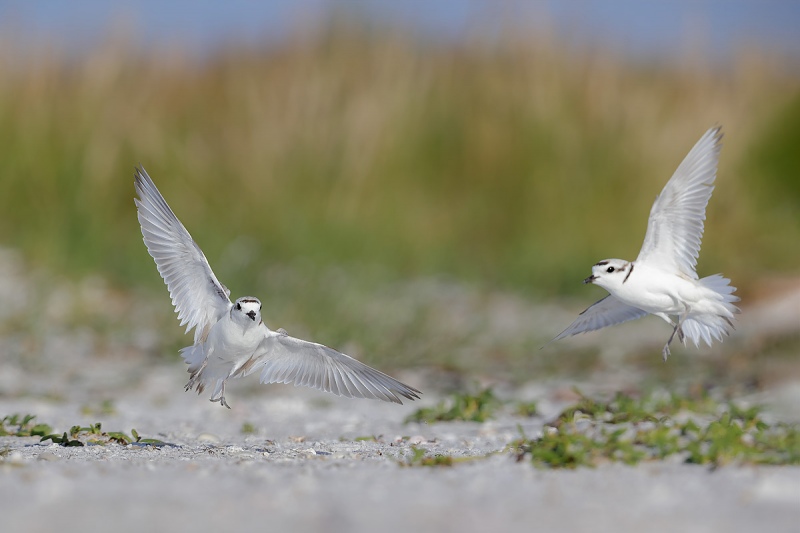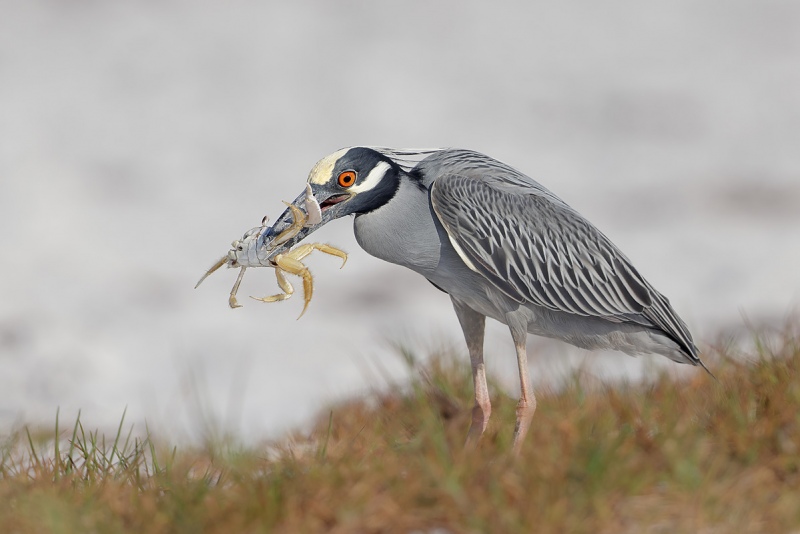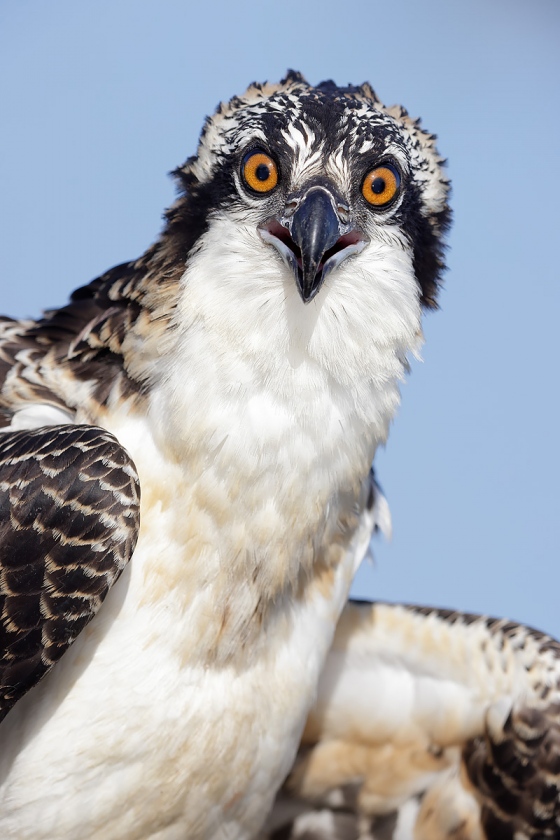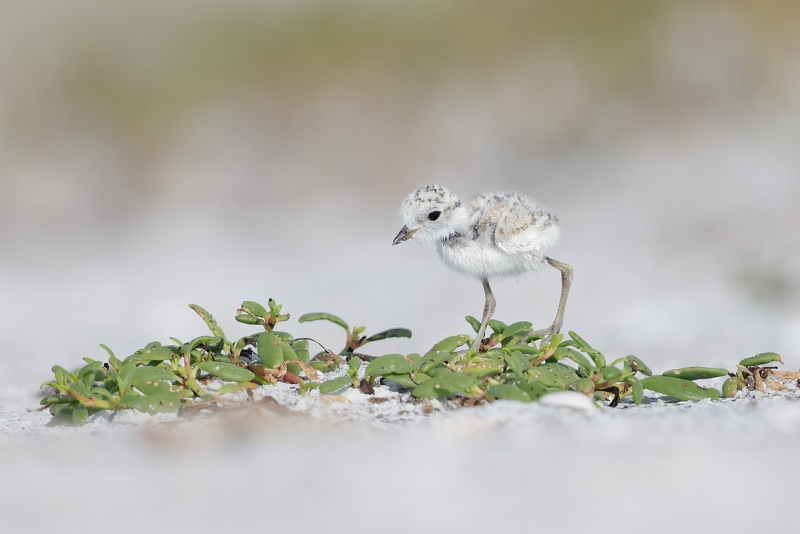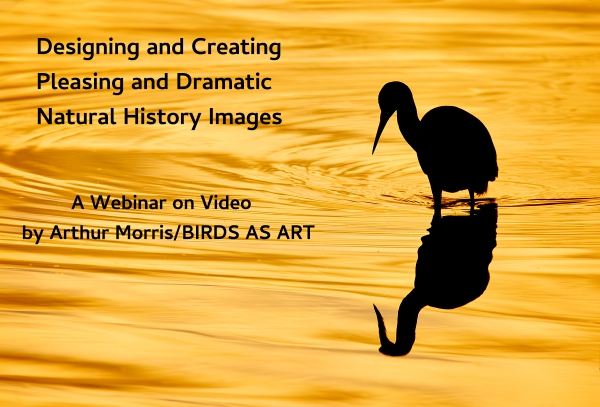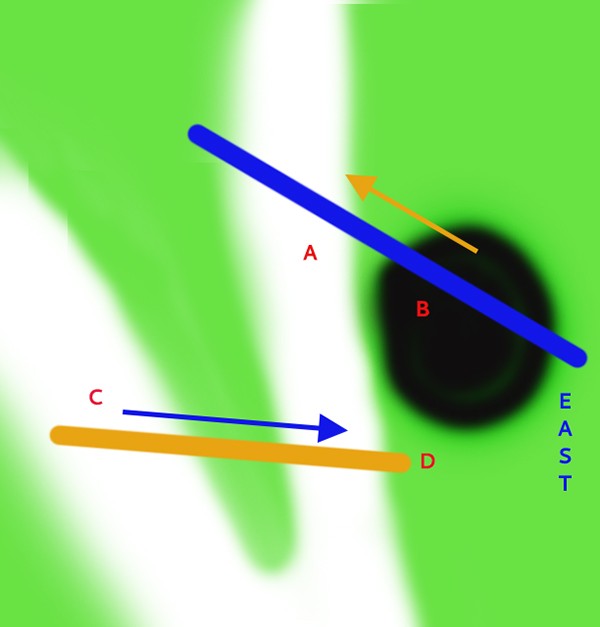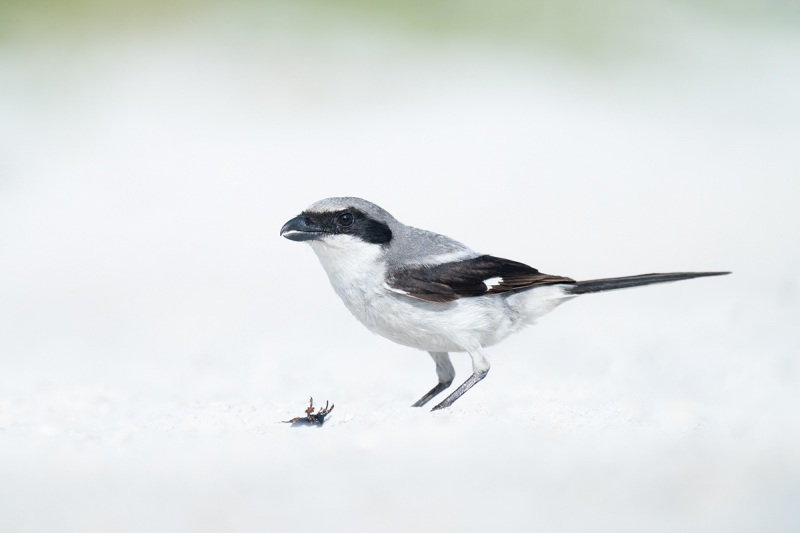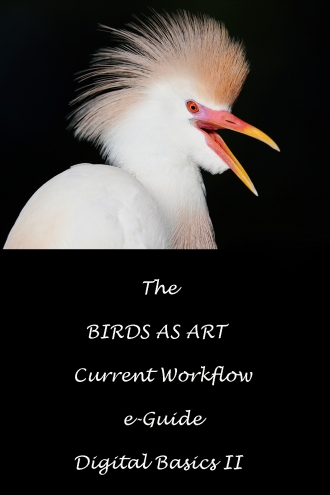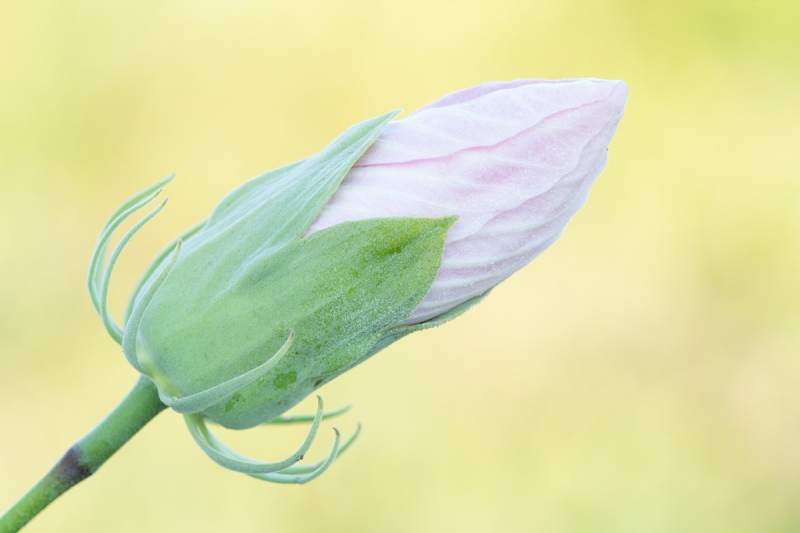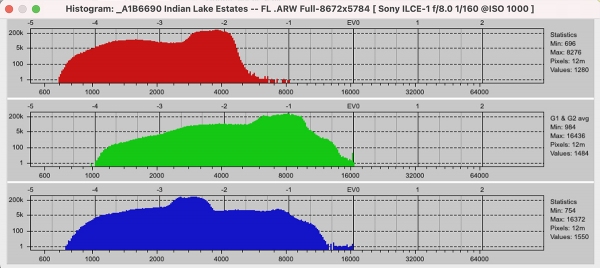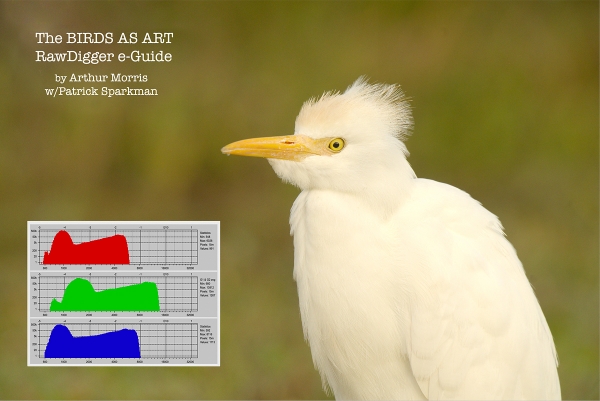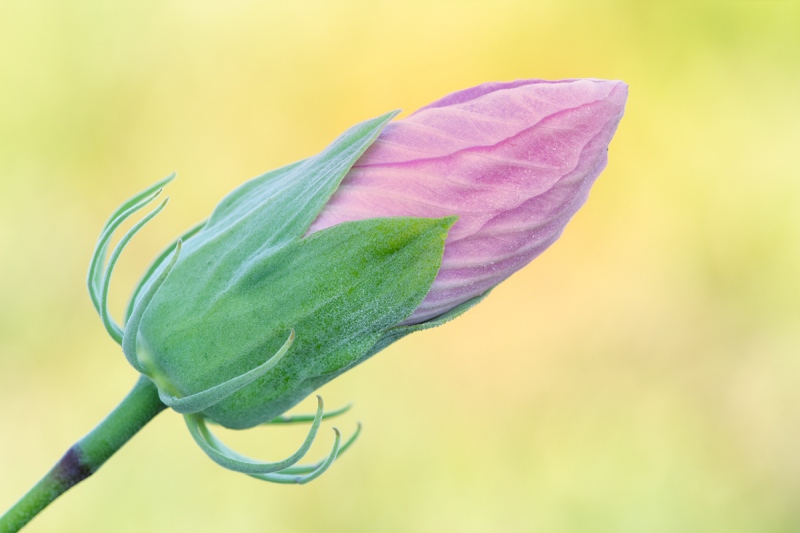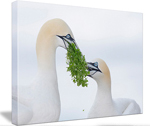June 13th, 2021 Your Fave?
Please be so kind as to leave a comment and let us know which of Clemens four featured images you think is the strongest. And why.
What’s Up?
I never made it down to the lake on Saturday morning. I worked on flowers in the butterfly garden for an hour, and then beat my way through the bushes to the creek behind the house and did some more. It was gloriously still with not even a hint of breeze and for that I was thankful. I spent a good part of the day doing image critiques in the Avian Forum at Bird Photographer’s.Net. BPN, where honest critiques are done gently.
I was about to get into the pool for my almost daily swim at about 3:15pm on Saturday afternoon. As I walked out onto the pool deck there was a loud thunderclap so I decided to postpone for a bit. Ten minutes later a huge blast of thunder and lightning shook the house violently. We lost lights and TV. It poured so hard that in two minutes the pool deck was flooded. Neither Jim nor I had ever seen anything like that before. I was able to get safely into the pool at 5:00pm. By the time I finished, the sun was out.
Today is Sunday 13 June 2021. The forecast for today is for mostly cloudy with a light southwest breeze, isolated and scattered thunderstorms, and an afternoon high of 90 degrees. I’ll probably go down to the lake and wind up doing flowers again. Wherever you are, and whatever you are doing, I hope that you too have a great day.
If you are interested in four (two 1/2 and three full) days of In-the-Field Instruction at a great new spot in the Jacksonville, FL area — the afternoon of Sunday 27 June through the morning session on Thursday 1 July 2021, please get in touch ASAP via e-mail for details, or call me on my cell at 863-221-2372. If you have a four-wheel drive truck or an SUV that would do well on the beach, that would be an amazing plus. Inexpensive lodging at a gorgeous AirBnB just 25 minutes from our shooting location is available. We only have room for one more in the 4 bedroom home.
This blog post took well more than an hour to prepare and makes 169 consecutive days with a new one. Please remember that if an item — a Delkin flash card, or a tripod head — for example, that is available from B&H and/or Bedfords and is also available in the BAA Online Store, it would be great if you opt to purchase from us. We will match any price. Please remember also to use my B&H affiliate links or to save 3% at Bedfords by using the BIRDSASART discount code at checkout. Doing either often earns you free guides and/or discounts. And doing so always earns my great appreciation.
Get on Line Now for the Canon EOS R3!
How to be one of the first to get yours. Seriously.
The specs below are quite impressive. If you are a serious Canon shooter who loves your R5 but are not enthralled by it, you will surely want to be among the first on your block to get your hands on the new Canon EOS R3. Right now this body is not available for pre-order. That tells us that it will be a while till it gets here. So what’s the secret, shoot Steve Elkins of Bedfords an e-mail and let him know that you would like to be placed on his R3 list and will be using the BIRDSASART discount code to save 3%. Act now and you will be #2 on his list; today’s guest photographer, Clemens Va der Werf, is #1.
The Canon EOS R3 will soon join the current lineup of EOS R full-frame mirrorless series cameras. This camera will usher in a new category to the EOS R system, positioned squarely between the EOS R5 and EOS-1D X Mark III cameras. The camera will put great emphasis on superb AF performance and speed with fast-moving subjects. It is being designed to meet the reliability and durability demands of professionals, even when working in challenging conditions.
Stacked Sensor and Electronic Shutter
At the heart of the EOS R3 camera’s performance will be an EOS camera first, a Canon-developed, full-frame stacked CMOS sensor with a back-illuminated design, providing substantially faster read-out speeds during still-imaging recording. This completely new sensor is designed to produce less “rolling shutter” distortion during Electronic Shutter operation and offers continuous Electronic Shutter still-image shooting at speeds up to 30 fps with full Dual Pixel CMOS AF and auto exposure. Also, the electronic shutter function will even support flash sync when working with Canon Speedlites.
Updated Autofocus and Eye Control AF
The AF system will leverage technology and performance from the well-received EOS R5 and EOS R6 cameras using Deep Learning technology to further enhance eye and body detection for even better performance for portrait and action-type shooting. In addition, the EOS R3’s subject detection AF will offer new recognizable subjects for its AF system, bolstering its focusing capabilities during challenging shooting conditions.
The Electronic Viewfinder of the EOS R3 will offer photographers the ability to select the initial area for AF tracking by simply looking directly at the viewfinder location where they want to begin AF. With Eye Control AF and Servo AF activated, the camera will focus on and track moving subjects at that location in the frame. When Face Detect + Tracking is active, the camera will continue to follow moving subjects around the entire active AF area.
4K Video Recording
With the EOS R3, you will be able to shoot in high-quality 4K with Canon Log3 and oversampled 4K, and raw movie internal recording. AF tracking for people, animals and motorsports will be possible while recording video as well.
Low-Light Performance
Able to autofocus in light as low as EV -7 or more, along with up to 8 stops of Coordinated IS control when used with RF lenses featuring Optical Image Stabilization, the EOS R3 will deliver amazing performance even in remarkably dark areas.
Rugged Body Design
The EOS R3 features a solid yet lightweight magnesium alloy body and carries forward the integrated vertical grip similar to the 1D series cameras, emphasizing both horizontal and vertical handling for challenging shooting situations. Weather-resistance and durability will equal Canon’s top-of-the-line EOS-1D X Mark III camera, and power will be delivered by the same Canon LP-E19 battery pack, too. And, the EOS R3 will have three primary input dials, giving familiar operation to current Canon EOS users. In terms of memory card support, a dual slot configuration will offer one CFexpress Type B slot and one SD slot.
The camera will also feature a multi controller to help you easily select the AF point, quickly change Menu settings, and more. And, the R3 will also be equipped with a smart controller-similar to that on the EOS-1D X Mark III, which lets you quickly shift AF point locations, or a starting point for Servo AF tracking. A vari-angle LCD will make it easy to compose shots at virtually any angle, and the touchscreen will enable you to access menus, change settings, and more, all on the fly.. Canon USA
|
|
|
Cover Image courtesy of and Copyright 2021 Brian Sump (Sump scores!)
|
The BIRDS AS ART Canon EOS R5 Camera User’s e-Guide: $75.00
The first thing that Clemens did when he got his R-5 was to set it up exactly as detailed in the R5 e-guide. The guide is 82 pages long: 21,458 words. There are more than 50 DPP 4 Autofocus-depicting screen captures. And a 31 minute 44 second educational video. This guide took three and a half months of hard work and a ton of help from at least seventeen very helpful and generous folks.
The guide covers — in great detail — all Menu Items that are relevant to bird, nature, and wildlife photography. It does not cover video. The section on AF methods and the AF Gallery has been expanded from the R5/R6 AF e-guide. It remains the one of the great strengths of this guide. I share my thoughts on what I am sure is the single best AF Method for photographing birds in flight. As most of you know, the guide includes a simple and easy way to change AF Methods that was introduced to me by Geoff Newhouse. In the AF Gallery you will see exactly how Face Detection plus Tracking AF works. In the Educational R5 Gallery video, I share my favorite R5 images along with dozens of bird photography tips and techniques.
In addition, I teach you how to get the best exposures with your R5. Detailed instructions on using the great In-camera HDR and Multiple Exposure features will be appreciated by creative folks who like to have fun. The three shutter modes are explained in detail as well. Bruce Dudek solved the can’t-get-to-Auto ISO problem that had stumped everyone at Canon. This information is of course shared in the guide. You will learn how to set up your EVF (Electronic Viewfinder) and Screen toggle options. Not to mention that the mysterious performance of the Q Button is revealed and simplified. Brian Sump’s images reveal how well you can do when using the R5 with EF lenses using one of the three Canon EF-EOS R Mount Adapters (as Donna did with Image #1 below). You will learn how I use Customize Dials to put either ISO or EC on the Thumb Dial and how to set up and save Custom Shooting Modes (C1-C3) that can remember both your Customize Dial and Customize Button settings! That is something that none of the SONY bodies do. 🙁 Near the end of the guide I share my all-important MY MENU items with you.
Like all BAA educational materials, the R5 guide is written in my informal, easy-to-follow style. I am quite proud of this guide and look forward to hearing your thoughts on our hard work.
You can purchase your copy of the BIRDS AS ART Canon EOS R5 Camera User’s e-Guide for $75.00 here in the BAA Online Store or by calling Jim in the office weekday afternoons at 863-692-0906 with your credit card in hand.
From the late Luis Grunauer via e-mail
I’ve watched the R5 gallery video. I LOVE THE PHOTOS and the stories behind them, not to mention that the EXIF data is displayed in Photo Mechanic. Your explanations of the settings and the processes are very helpful. Your comments on framing and composition (both the great ones and the ones you refer to as “created by operator error”) were enlightening. It gives folks a chance to learn from someone with lots of in-the-field hands on experience with the R5! Well done and thanks so much for sharing it with me. There is some awesome teaching in the video to say the least!
From Ron Santini via e-mail
I have an R5 and purchased your “The BAA R5/R6 AF Guide” about a month ago. It has been a game-changer for me. I previously used back button focus (BBF), but after following your guide, that is a thing of the past. You truly simplified the process and I just want to thank you.
|
|
|
This image was created on 29 May 2021 at Fort DeSoto by Clemens Van der Werf. Lying flat on the ground, he used the tripod-mounted Canon 600mm f/4L IS II lens (now replaced by the Canon EF 600mm f/4L IS III USM lens), the Canon Extender EF 2X III, and the Canon EOS R5 Mirrorless Digital Camera Body. ISO 800: 1/2000 sec. at f/10 (stopped down 2/3-stop) in Manual mode. AWB at 8:29am on a slightly overcast morning.
Face Detection + Tracking/AF-C was active at the moment of exposure and performed perfectly. Click on the image to see a larger version.
Image #1: Snowy Plovers squabbling
Image Courtesy of and copyright 2021: Clemens Van der Werf
|
The 600 mm f/4 + a 2xTC Rocks with Canon and SONY Systems
Both Canon and SONY now offer amazing, astounding, science-fiction-like, nearly full frame autofocus at 1200mm with their 600mm f/4 lenses and a 2X TC. Skilled, young, strong photographers are even shooting hand held flight at 1200mm. With small subjects. And sharp 1200mm images from both the R5 (45MP) and the a1 (51MP) can easily stand up to healthy crops. We are indeed living in a world that is vastly different from even two years ago.
On a related note, if you are a serious bird photographer without any physical limitations, and can afford a top of the line 600mm or 500mm f/4 along with a high-end mirrorless body and both teleconverters, but do not presently own that gear, I can only ask, “what are you waiting for?” 1200mm and 1000mm are deadly weapons ever for those who live in areas with silly tame birds, and they have never been more effective than they have ever been before. And yes thanks, please use the links.
|
|
|
This image was also created on 29 May 2021 at Fort DeSoto by Clemens Van der Werf. He used the tripod-mounted Canon 600mm f/4L IS II lens (now replaced by the Canon EF 600mm f/4L IS III USM lens), the Canon Extender EF 2X III, and the Canon EOS R5 Mirrorless Digital Camera Body. ISO 500: 1/2000 sec. at f/9 (stopped down 1/3-stop) in Manual mode. AWB at 9:12am on a then fairly bright overcast morning.
Face Detection + Tracking/AF-C was active at the moment of exposure and performed perfectly. Click on the image to see a larger version.
Image #2: Yellow-crowned Night-Heron with ghost crab
Image Courtesy of and copyright 2021: Clemens Van der Werf
|
Yellow-crowned Night-Heron at Fort DeSoto
This species used to be quite common at DeSoto but I have seen very few over the past few years and none on many visits this year. On the morning of the 29th I mentioned to Clemens that it was strange that we had not seen one at North Beach or anywhere else. An hour later, Clemens ran into the holy grail yellow-crowned with a whole ghost crab. That’s what happens when you work hard. As the bird was uncharacteristically on the timid side, 24X magnification was just the ticket.
|
|
|
This image was created on 3 June 2021 on Lake Blue Cypress by Clemens Van der Werf while we were aboard his flats boat. He used the hand held (yes, hand held!) Canon 600mm f/4L IS II lens (now replaced by the much lighter Canon EF 600mm f/4L IS III USM lens), the Canon Extender EF 2X III, and the Canon EOS R5 Mirrorless Digital Camera Body. ISO 1000: 1/1600 sec. at f/11 (stopped down one-stop) in Manual mode. AWB at 8:13am on a then fairly bright overcast morning.
Face Detection + Tracking/AF-C was active at the moment of exposure and performed perfectly. Click on the image to see a larger version.
Image #3: Baby Osprey staring
Image Courtesy of and copyright 2021: Clemens Van der Werf
|
Tall and Taller, Strong and Stronger …
Here Clemens was standing precariously on the rear platform of his flats boat and thus, was pretty much at eye level with the very low Osprey nest. In addition to his height (6′ 6″), Clemens’ strength is a huge asset. The Canon 600 II is a beast to hand hold.
|
|
|
This image was created on 4 June 2021 at Fort DeSoto by Clemens Van der Werf. Lying flat on the ground, he used the tripod-mounted Canon 600mm f/4L IS II lens (now replaced by the Canon EF 600mm f/4L IS III USM lens), the Canon Extender EF 2X III, and the Canon EOS R5 Mirrorless Digital Camera Body. ISO 640: 1/2000 sec. at f/8 (wide open) in Manual mode. AWB at 8:44am on a slightly overcast morning.
Face Detection + Tracking/AF-C was active at the moment of exposure and performed perfectly. Click on the image to see a larger version.
Image #1: Snowy Plover chick
Image Courtesy of and copyright 2021: Clemens Van der Werf
|
Perseverance Helps Too!
Blessed by a somewhat cloudy morning, Clemens set out in search of a Snowy Plover chick. He lay on his belly for close to two full hours and was eventually rewarded with some very good chances. I love that he caught the little guy on top of the beach vegetation.
|
|
Designing and Creating Pleasing and Dramatic Natural History Images
A Video Webinar: $30 by electronic download
Order your copy by clicking here.
|
Designing and Creating Pleasing and Dramatic Natural History Images
A Video Webinar
In this 1 hour 28 minute plus video you will learn and be inspired. We cover everything from the very basics to the fine points. After a brief bio, the topics include Behavior, Action, Diagonal Lines, and the Cuteness Factor; Birds in Flight — The Holy Grail of Bird Photography; Mis-Framing!; Basic Image Design/HORIZONTALS: Get the subject out of the center of the frame. Basic Image Design/VERTICALS: The center of the frame is generally fine; The Importance of BACKGROUND; Isolating the Subject; Other Elements of Composition; On Getting Low; Going Wide for Bird-scapes; Super-tight!; Working in Sunny Conditions; Working in Cloudy Conditions; Working in Foggy Conditions; Working in the Shade; Working in Bad Weather; Creating Back-lit Images; Creating Silhouettes; and Creating Pleasing Blurs.
Each segment of the program consists of an average of about 15 images that will drive home the points being made, educate you, and inspire. The instructions and advice, given clearly and concisely, are based on my near-38 years of experience photographing birds with telephoto and super-telephoto lenses. And on several decades of creating educational blog posts.
This presentation is based on the webinar that I did for the South Shore Camera Club in April. You can find some of the comments below along with comments from two of the folks who viewed the webinar the night before the DeSoto IPT began.
You can order your copy of Designing and Creating Pleasing and Dramatic Natural History Images/A Video Webinar by clicking here or by calling Jim with your credit card in hand at 863-692-0906.
Typos
With all blog posts, feel free to e-mail or to leave a comment regarding any typos or errors.
June 12th, 2021 What’s Up?
I did drive down to the lake for a short visit, but there was not much going on so I headed back home and did some flowers from our butterfly garden. I pretty much finished the Nikonians webinar program and spent an hour critiquing images in the Avian Forum at Bird Photographer’s.Net. BPN, where honest critiques are done gently. It ain’t just birds. If you want to learn about dealing with over-saturated REDs, check out the learning that occurred in the Eric Patdu Macaw post here.
Today is Saturday 12 June 2021. The forecast for today is for partly sunny turning cloudy early with scattered thunderstorms this afternoon and a high of only 89 degrees. I’ll be heading out without any great expectations as soon as I hit the Publish button. Wherever you are, and whatever you are doing, I hope that you too have a great day.
If you are interested in four (two 1/2 and three full) days of In-the-Field Instruction at a great new spot in the Jacksonville, FL area — the afternoon of Sunday 27 June through the morning session on Thursday 1 July 2021, please get in touch ASAP via e-mail for details, or call me on my cell at 863-221-2372. If you have a four-wheel drive truck or an SUV that would do well on the beach, that would be an amazing plus. Inexpensive lodging at a gorgeous AirBnB just 25 minutes from our shooting location is available. We only have room for one more in the 4 bedroom home.
This blog post took more than an hour to prepare, and makes 168 consecutive days with a new one. Please remember that if an item — a Delkin flash card, or a tripod head — for example, that is available from B&H and/or Bedfords and is also available in the BAA Online Store, it would be great if you opt to purchase from us. We will match any price. Please remember also to use my B&H affiliate links or to save 3% at Bedfords by using the BIRDSASART discount code at checkout. Doing either often earns you free guides and/or discounts. And doing so always earns my great appreciation.
Please Remember
With income from IPTs now close to zero, please, if you enjoy and learn from the blog, remember to use one of my two affiliate programs when purchasing new gear. Doing so just might make it possible for me to avoid having to try to get a job as a Walmart greeter and will not cost you a single penny more. And if you use Bedfords and remember to enter the BIRDSASART code at checkout, you will save 3% on every order and enjoy free second-day air shipping. In these crazy times — I am out at least forty to sixty thousand dollars so far due to COVID 19 (with lots more to come) — remembering to use my B&H link or to shop at Bedfords will help me out a ton and be greatly appreciated. Overseas folks who cannot order from the US because of import fees, duties, and taxes, are invited to help out by clicking here to leave a blog thank you gift if they see fit.
New and Better Bedfords Discount Policy!
You can now save 3% on all of your Bedfords photo gear purchases by entering the BIRDSASART coupon code at checkout. Your discount will be applied to your pre-tax total. In addition, by using the code you will get 2nd day air shipping via Fed Ex.
Grab a Nikon AF-S Teleconverter TC-14E III and save $14.99. Purchase a Canon EOS R5 and your discount will be $116.97. Purchase a Sony FE 600mm f/4 GM OSS lens and save a remarkable $389.94! Your Bedford’s purchase no longer needs to be greater than $1,000.00 for you to receive a discount. The more you spend, the more you save.
Money Saving Reminder
Many have learned that if you need a hot photo item that is out of stock at B&H and would enjoy free second-day air shipping, your best bet is to click here, place an order with Bedfords, and enter the coupon code BIRDSASART at checkout. If an item is out of stock, contact Steve Elkins via e-mail or on his cell phone at (479) 381-2592 (Central time). Be sure to mention the BIRDSASART coupon code and use it for your online order to save 3% and enjoy free 2nd-day air shipping. Steve has been great at getting folks the hot items that are out of stock at B&H and everywhere else. The wait lists at the big stores can be a year or longer for the hard to get items. Steve will surely get you your gear long before that. For the past year, he has been helping BAA Blog folks get their hands on items like the SONY a9 ii, the SONY 200-600 G OSS lens, the Canon EOS R5, the Canon RF 100-500mm lens, and the Nikon 500mm PF. Steve is personable, helpful, and eager to please.


Gear Questions and Advice
Too many folks attending BAA IPTs (remember those?) and dozens of photographers whom I see in the field and on BPN, are–out of ignorance–using the wrong gear especially when it comes to tripods and more especially, tripod heads… Please know that I am always glad to answer your gear questions via e-mail.
|
|
Lucky Strike Means Fine Tobacco
|
LSMFT
Lucky Strikes were the popular cigarette brand of my childhood. They, along with Schaefer Beer, were the main sponsors of the Brooklyn Dodgers, my favorite team. My late-Dad, Private First Class Robert Edward Morris, picked up the smoking habit in WW II while serving in the Aleutians. It was cold and the troops did not have proper gloves or boots, so they took up smoking in part to keep warm. Ironically, the Red Cross supplied smokes by the boatload. My Dad became a four-pack a day man for several decades after he returned home less his right arm. He survived the smoker’s daily double: throat cancer and lung cancer. Even more ironically, my late-Mom, Hazel Louise Morris, died at 94 of COPD. From second-hand smoke.
To learn more about baseball and beer, read the very interesting and nostalgic Ballpark Digest article by Kevin Reichard here.
When I was about ten years old, my Dad said to me, “You wanna try a puff?” I said sure. I put the cigarette to my lips and sucked in. Then I almost choked to death. I never even thought about taking a second puff. It was one of the best things my Dad ever did for me. To learn a lot more about the amazing life of Bob Morris, check out the Honoring My Dad, Private First-Class Robert Edward Morris. And the rest, in the blog post here.
In any case, when I thought about how lucky I was with the shrike (as detailed below), the phrase from my childhood came to mind and I couldn’t shake it. LSMFT indeed! And thus, the very confusing title of today’s blog post…
|
|
North Beach story board map
|
It’s Much Better to Try and Fail Than Not to Try at All…
It had been a pretty good morning at DeSoto. Though I had taken things fairly easily, I had walked about two miles and was tired and hot as I made my way back to the parking lot at North Beach. I was walking roughly east with the sun in my face. The broad sand paths are shown in white. When I got to C, I spotted a Loggerhead Shrike in the middle of the hard sand road at A. I’ve seen a zillion shrikes in Florida, but have never come close to making a good photograph of even one of them. They are usually quite shy. So when I saw this bird, I thought, “I’ll try, but my chances of getting close and on sun angle are less than one in a hundred.”
I needed to get to B, but rather than heading directly there, I continued straight ahead to D and stopped to set the exposure. Then I put tripod down and moved slowly towards B. On the way in, I noticed that the shrike was trying to dig up a prey item. I raised my chances success to one in ten. The best news was that the black circle was a depression from a small seasonal pond that fills after heavy rains; it was totally dry but more than a foot deep. When I got to B, I was getting excited but still managed to sit down slowly without scaring the bird away. Using the knee-pod technique, I bent my left knee, placed my left forearm atop the distal portion of my thigh, and went to work. I never saw the beetle until I looked at the images.
So yes, it’s far better to try even when the odds are against you. And who knows? You just might succeed.
|
|
|
This image was created on 4 June 2021 at Fort DeSoto Park. While seated in a depression (as detailed above), I used the hand held Sony FE 600mm f/4 GM OSS lens with the Sony FE 1.4x Teleconverter and The One, the Sony Alpha 1 Mirrorless digital camera. ISO 800. Exposure determined via Zebras with ISO on the rear dial: 1/2500 sec. at f/5.6 (wide open) in Manual mode. AWB at 9:22am on a clear sunny morning.
Wide/AF-C was active at the moment of exposure and performed perfectly by nailing and tracking the shrike’s eye. Click on the image to see a larger version.
Loggerhead Shrike with beetle
|
The Optimized Image
Like all of my current a1 images, this raw file was converted in Adobe Camera Raw. The optimized image is a relatively small crop from the left and from above, and a bit of canvas was added behind the bird. I did some beach clean-up using my usual cadre of Photoshop tools: the Patch Tool, the Spot Healing Brush, and Content Aware Fill. I created about 70 images of this bird before it flew off. I kept nine of those after the first edit, and just deleted six more, leaving me with three.
Could the beetle be a cockroach?
The short story is that I am very glad that I tried.
|
|
The BIRDS AS ART Current Workflow e-Guide (Digital Basics II).
You can order your copy from the BAA Online Store here, by sending a PayPal for $40 here, or by calling Jim or Jennifer weekdays at 863-692-0906 with your credit card in hand. Be sure to specify Digital Basics II.
|
The BIRDS AS ART Current Workflow e-Guide (Digital Basics II)
The clean-up techniques mentioned above and tons more great Photoshop tips and techniques — along with all of my personalized Keyboard Shortcuts — are covered in detail in the BIRDS AS ART Current Workflow e-Guide (Digital Basics II), an instructional PDF that is sent via e-mail. Learn more and check out the free excerpt in the blog post here. While the new e-Guide reflects my MacBook Pro/Photo Mechanic/DPP 4/Photoshop workflow, folks using a PC and/or BreezeBrowser will also benefit greatly by studying the material on DB II. Note: folks working on a PC and/or those who do not want to miss anything Photoshop may wish to purchase the original Digital Basics along with DB II while saving $15 by clicking here to buy the DB Bundle.
Folks who learn well by following along rather than by reading can check out the complete collection of MP 4 Photoshop Tutorial Videos by clicking here. Note: all of the videos are now priced at an amazingly low $5.00 each.
You can learn how and why I converted all of my Canon digital RAW files in DPP 4 in the DPP 4 RAW Conversion Guide here. More recently, I became proficient at converting my Nikon RAW (NEF) files in Adobe Camera Raw. About two years ago I began converting my Nikon and Sony RAW files in Capture One Pro 12 and continue to do so today.
To purchase Capture One, please use this link. Then you can learn more about Capture One in the Capture One Pro 12 Simplified MP4 Video here. The next step would be to get a copy of Arash Hazeghi’s “The Nikon Photographers’ Guide to Phase One Capture One Pro e-Guide” in the blog post here.
You can learn advanced Quick Masking and advanced Layer Masking techniques in APTATS I & II. You can save $15 by purchasing the pair.
Typos
With all blog posts, feel free to e-mail or to leave a comment regarding any typos or errors.
June 11th, 2021 What’s Up
Thursday morning was another beauty at ILE. I took an exploratory walk along the edge of the marsh and took some pretty bad images of White Ibis. And I fanned on a micro-second chance on two river otters as well. I am sure that a third pair of stilts has a nest, this one somewhere close to the boardwalk. I could not find it, but they were acting very nesty — yipping and yapping at my distant approach so I stayed well back. When a Fish Crow flew by, both adults rose into the air to drive it away. One stilt at the pretty nest — still with only two eggs, has been on its nest incubating for the past week. The nest is now high and dry as the water levels continue to drop.
Today is Friday 11 June 2021. It will be clear in the morning with the wind out of the southwest for the first time in weeks. I will be out early looking for more flowers (or buds). Wherever you are, and whatever you are doing, I hope that you too have a great day.
If you are interested in four (two 1/2 and three full) days of In-the-Field Instruction at a great new spot in the Jacksonville, FL area — the afternoon of Sunday 27 June through the morning session on Thursday 1 July 2021, please get in touch ASAP via e-mail for details, or call me on my cell at 863-221-2372. If you have a four-wheel drive truck or an SUV that would do well on the beach, that would be an amazing plus. Inexpensive lodging at a gorgeous AirBnB just 25 minutes from our shooting location is available. We only have room for one more in the 4 bedroom home.
This blog post took more than an hour to prepare, and makes 167 consecutive days with a new one. Please remember that if an item — a Delkin flash card, or a tripod head — for example, that is available from B&H and/or Bedfords and is also available in the BAA Online Store, it would be great if you opt to purchase from us. We will match any price. Please remember also to use my B&H affiliate links or to save 3% at Bedfords by using the BIRDSASART discount code at checkout. Doing either often earns you free guides and/or discounts. And doing so always earns my great appreciation.
Please Remember
With income from IPTs now close to zero, please, if you enjoy and learn from the blog, remember to use one of my two affiliate programs when purchasing new gear. Doing so just might make it possible for me to avoid having to try to get a job as a Walmart greeter and will not cost you a single penny more. And if you use Bedfords and remember to enter the BIRDSASART code at checkout, you will save 3% on every order and enjoy free second-day air shipping. In these crazy times — I am out at least forty to sixty thousand dollars so far due to COVID 19 (with lots more to come) — remembering to use my B&H link or to shop at Bedfords will help me out a ton and be greatly appreciated. Overseas folks who cannot order from the US because of import fees, duties, and taxes, are invited to help out by clicking here to leave a blog thank you gift if they see fit.
New and Better Bedfords Discount Policy!
You can now save 3% on all of your Bedfords photo gear purchases by entering the BIRDSASART coupon code at checkout. Your discount will be applied to your pre-tax total. In addition, by using the code you will get 2nd day air shipping via Fed Ex.
Grab a Nikon AF-S Teleconverter TC-14E III and save $14.99. Purchase a Canon EOS R5 and your discount will be $116.97. Purchase a Sony FE 600mm f/4 GM OSS lens and save a remarkable $389.94! Your Bedford’s purchase no longer needs to be greater than $1,000.00 for you to receive a discount. The more you spend, the more you save.
Money Saving Reminder
Many have learned that if you need a hot photo item that is out of stock at B&H and would enjoy free second-day air shipping, your best bet is to click here, place an order with Bedfords, and enter the coupon code BIRDSASART at checkout. If an item is out of stock, contact Steve Elkins via e-mail or on his cell phone at (479) 381-2592 (Central time). Be sure to mention the BIRDSASART coupon code and use it for your online order to save 3% and enjoy free 2nd-day air shipping. Steve has been great at getting folks the hot items that are out of stock at B&H and everywhere else. The wait lists at the big stores can be a year or longer for the hard to get items. Steve will surely get you your gear long before that. For the past year, he has been helping BAA Blog folks get their hands on items like the SONY a9 ii, the SONY 200-600 G OSS lens, the Canon EOS R5, the Canon RF 100-500mm lens, and the Nikon 500mm PF. Steve is personable, helpful, and eager to please.


Gear Questions and Advice
Too many folks attending BAA IPTs (remember those?) and dozens of photographers whom I see in the field and on BPN, are–out of ignorance–using the wrong gear especially when it comes to tripods and more especially, tripod heads… Please know that I am always glad to answer your gear questions via e-mail.
Washed Out Raw Files
Even before I began learning from RawDigger, I advised often that your properly exposed-to-the-right raw files should look washed out and lousy on the back of your camera and on your computer monitor, just like Image #1 above. If your images look great with rich color as captured, that means that nearly all of them are seriously under-exposed. Once I began using RawDigger I learned how to truly expose-to-the-right; now most of my raw files look even worse and look completely washed out. Keep reading to see what you can do with a crappy looking raw file.
o use
|
Image #1A: The RawDigger adapted histogram for the Swamp Rosemallow Hibiscus grandiflorus image.
|
Getting Perfect Exposures with Flowers
Getting dead-solid perfect exposures — like the one above — every time, is child’s play once you learn to use RawDigger. Why? You bracket your exposures in 1/3 stop increments and examine the raw files after-the-fact with Raw Digger. Note that a good deal of the G channel data goes right up to the 16000 line. There are actually a total of 157 OvExp pixels out of 51,000,000. All of those are in the specular highlights of the moisture on the bud. We take you through the entire process in the flower video that is included with the RawDigger e-Guide.
Via e-Mail from Geri George
Hi Artie, Thanks for the RawDigger e-Guide. With many of my flower images, DPP 4 shows lots of over-exposure on the petals, but RawDigger shows only a smattering (less than a hundred). They all converted perfectly in DPP 4 simply by pulling down the Highlight slider a bit. RawDigger has some really cool stuff!
Thanks and best, Geri
|
|
RawDigger e-Guide with Two Videos
|
The RawDigger e-Guide with Two Videos
by Arthur Morris with Patrick Sparkman
The RawDigger e-Guide was created only for serious photographers who wish to get the absolute most out of their raw files. It is not for the faint-of-heart who are happy to go through life under-exposing every raw file they create.
Patrick and I began work on the guide in July 2020. At first we struggled. We asked questions. We learned about Max-G values. We puzzled as to why the Max G values for different cameras were different. IPT veteran Bart Deamer asked lots of questions that we could not answer. We got help from RawDigger creator Iliah Borg. We learned. In December, Patrick came up with an Adapted Histogram that allows us to evaluate the exposures and raw file brightness for all images created with all digital camera bodies from the last two decades. What we learned prompted three complete beginning to end re-writes.
The point of the guide is to teach you to truly mega-Expose-to-the-Right so that you will minimize noise, maximize image quality, best utilize your camera’s dynamic range, and attain the highest possible level of shadow detail in your RAW files in every situation. In addition, your properly exposed RAW files will contain more tonal information and feature the smoothest possible transitions between tones. And your optimized images will feature rich, accurate color.
We teach you why the GREEN channel is almost always the first to over-expose. We save you money by advising you which version of RawDigger you need. We teach you how to interpret the Max G values for your Canon, Nikon, and SONY camera bodies. It is very likely that the Shock-your-World section will shock you. And lastly — thanks to the technical and practical brilliance of Patrick Sparkman — we teach you a simple way to quickly and easily evaluate your exposures and raw file brightness using an Adapted RawDigger histogram.
The flower video takes you through a session where artie edits a folder of images in Capture One while checking the exposures and Max-G values in RawDigger. The Adapted Histogram video examines a series of recent images with the pink histograms and covers lots of fine points including and especially how to deal with specular highlights. The directions for setting up the Adapted Histogram are in the text.
If we priced this guide based on how much effort we put into it, it would sell it for $999.00. But as this guide will be purchased only by a limited number of serious photographers, we have priced it at $51.00. You can order yours here in the BAA Online Store.
The Optimized Master File
The washed out, seemingly faded Image #1, was — as compared to the untouched raw file, actually darkened during the raw conversion, and the color was juiced up a bit as well. But the converted .TIF file that I opened in Photoshop looked nothing like the beautiful, richly colored bud that I photographed. So I brought it into Nik Color Efex Pro’s Viveza plug-in and went to work. Thanks to several lessons from Clemens Van der Werf and lots of practice, I am getting comfortable with using Viveza. In this great plug-in, you are easily able to make targeted adjustments based on color. It as easy to jazz up the pinks and greens of the bud while leaving the lovely yellow background unchanged. Note: subject in shade/background in sun works great for flowers as well as it does for birds.
Today’s blog photo will be one of the featured images in the Viveza Basics tutorial video that I will create soon after mid-month; I will be working on the Nikonians webinar presentation until then.
Typos
With all blog posts, feel free to e-mail or to leave a comment regarding any typos or errors.
|
|

